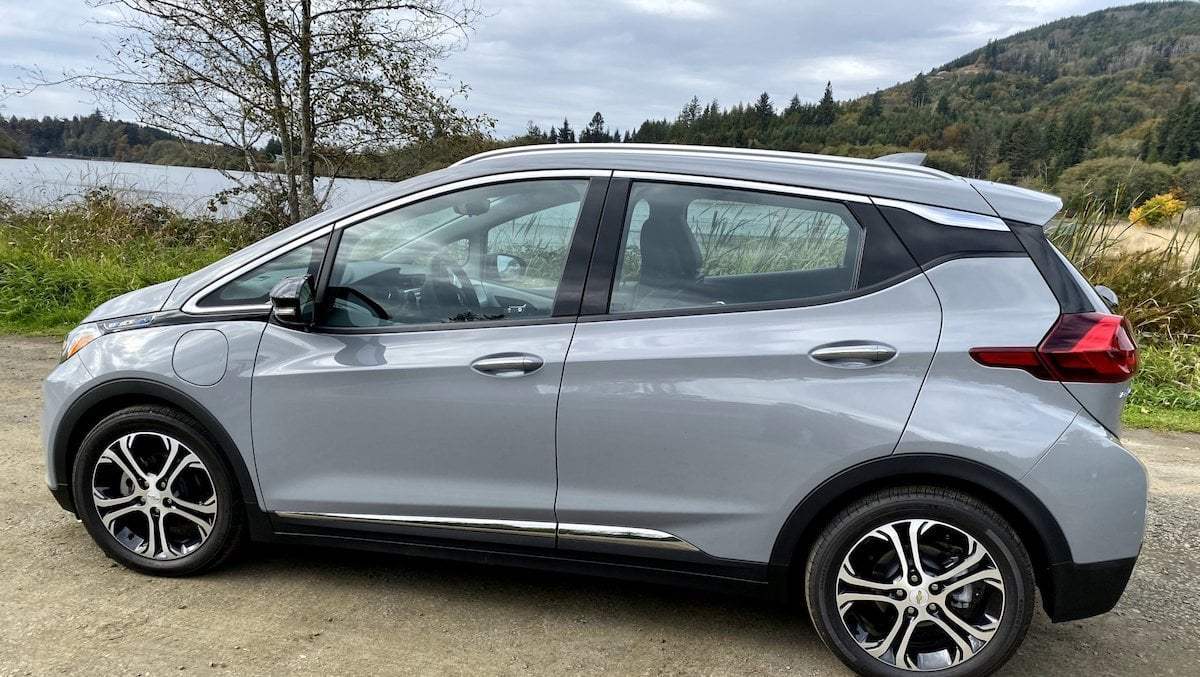
All cars today are half computer and half vehicle, and the 2020 Chevy Bolt is no exception, with the added tech that also goes with full electric vehicles.
Here are 10 things that the average driver (rather than car enthusiast) will want to know about the Chevy Bolt 2020 tech before considering buying one, compiled from research and from a two-day test drive last fall provided by the Chevy Bolt publicity team.
Chevy Bolt 2020 Tech
What Tech Runs the Car
1. The technical development of the lithium-ion batteries that run EVs is fascinating because it’s not truly new technology. As anyone with a passing knowledge of batteries knows, batteries are not new technology. What is newer are the lithium-ion batteries that are small enough to hold large charges. But more technology advances are coming in EV batteries, as Samsung is testing solid-state batteries that may be able to hold charges for over 700 miles.
Additional note: However, statistically speaking, EVs, in general, are not more prone to catching fire than combustion engine cars and most of the fires seem to stem not from coolant issues but from the batteries being damaged during crashes.
2. The Chevy Bolt 2020 batteries are certified for 259 miles on one charge but factors that can affect the range are outside temperature changes that require the use of the heating and air conditioning systems, where the car is being driven, and your own driver quirks. One Add-On that adds range is the Comfort and Convenience Package, which includes heated seats and a heated steering wheel. For those driving the EV in cold weather, these keep the driver warm without expending the energy to heat the entire interior.
3. If you buy a Bolt, definitely purchase the DC fast-charging option that allows adding enough charge in 30 minutes to go another 100 miles, unless you’re only going to drive the Bolt around your neighborhood and use your home charger. You must also purchase the portable cable for traveling.
4. Maintenance issues are different in an EV. For instance, no oil changes! And there’s less wear and tear on brake pads because of the regenerative braking system that also gives power back to the battery.
5. The Electric Transmission for one-pedal driving (basically the “L” gear) is effective and eliminates the need, in many cases, of having to use the brake pedal. It takes several hours to become used to the Chevy Bolt 2020 slowing and then stopping as you let off the gas. It’s a feature that I’ve never had on a car but enjoyed because of the ease of use. It can add more driving range to the battery but that seemed to be minimal during the test drive. Mostly, I simply liked the change to one-pedal.
6. Another Add-On package that was installed on the car I drove which I’d highly recommend is the Driver Confidence II Package, especially if you are teaching someone to drive or have less experienced drivers in your home. That includes: Automatic Emergency Braking, Forward Collision Alert, Lane Keep Assist with Lane Departure Warning, Following Distance Indicator, Front Pedestrian Braking, and IntelliBeam® automatic high beam headlamps.
I turned off my Lane Keep Assist because, for me, it proved annoying. But, again, inexperienced drivers might appreciate it to learn the muscle memory and the other features, to me, make the car safer to drive.
If you have teen drivers, the Teen Drive package comes standard. Basically, you can customize the settings for individual drivers to “encourage better driving behavior.” It automatically turns on safety features (see Driver Confidence package above), and it’ll give you an in-vehicle report card on driving habits. If you choose that level of supervision, discussing that report card should prove interesting.

7. If this is your first EV, be prepared at first to spend a lot of time looking at the indicator of battery power left on the dashboard, right next to the speedometer. Depending on how and where you’re driving, it can add or subtract miles left before needing a charge. Luckily, it’s a clear and easy to read display.
8. Sight distance inside the Bolt is very good, with wide windows. GeekMom Corrina, who is 5 foot 2 inches, felt it compared favorably to the sight distance from a taller minivan. I, taller and a larger body-size, felt there could have been more room in the driver’s seat.
9. The Driver Information Center is the heart of the tech inside the car. That’s where all the controls are displayed, including where heating controls, air conditioning, the radio *including Sirius FM*, and the OnStar button are located. It’s also where the smartphone controls are mirrored, if you plug your phone into the car. It either takes some fiddling (if you hate reading directions) or reading the directions to learn how to use it quickly and efficiently when driving. (I do not recommend being distracted trying to learn it on the fly when driving.) But, overall, I would estimate it only takes a day to a week to use this easily and well.

10. The rear-view camera feed appears directly in the rear-view mirror but only if you want. You can choose to drive with it as just a mirror. I wanted initially to do it that way but found, after testing the camera, that I preferred the camera for a better view of what was behind and to the side of the car.
Bonus Points That Are Helpful to Know:
11. The other features include:
- Keyless Start–push button–Standard
- OnStar
- Cruise control–Standard
- LATCH system making it easier to install kid/infant car seats
- Rear child security locks
- Outside temp display
- Theft deterrent system–sounds horn/flashes lights
12. The Bolt comes standard with StabiliTrak, electronic stability control system with traction control. It automatically helps enhance control, particularly during emergency maneuvers, by adjusting the brakes and motor torque to help you stay on your intended path. This also includes Traction Control that detects wheel slippage and applies brake pressure and/or reduces motor power to help the driver maintain control when accelerating on wet or snow-covered roads.
I did give this package a test workout with a vehicle obstacle course set up at the end of our two-day adventure. There was much squealing of tires but no cones displaced, and I never once felt the car veering out of control.
13. Yes, it comes with a 4G LTE Wi-Fi® hotspot capable. This is important for, well, anyone, but particularly for families. There were occasional spots where the hotspot dropped the signal, especially up in the mountains of Oregon that Bigfoot is known to frequent, but they were few and far between. Still, don’t expect a signal 100 percent of the time.
The Big Question: Charging
Charging is the element that causes the most resistance to buying an EV. The concern about running out of a charge is real. While we’re all waiting for that new solid state battery to come into play, which might have a range of over 700 miles, or for more fast-charging stations, there are things that can mitigate the worry of running out of power on longer trips.
First, as mentioned, get the DC Fast Charging port to add 100 miles in 30 minutes. But there also needs to be planning before a long trip, with apps such as Plugshare, EVHotels, EVcharging, and a few others that will track charging stations near your location. I tested a few of those apps. They’re not always easy to read because you need to know if DC fast-charging is a capability at that point, and it’s not always clear if the charge stations are open to the public. For instance, numerous Hilton hotels offer EV charging. But what if you’re not staying at that hotel but are a Hilton Honors member? I asked Hilton about this and their advice was to contact the individual hotels.
My advice, then, would be to contact (if possible) the charging stations where you intend to stop on a longer trip, to get a definitive answer about whether you can charge up there and how long that might potentially take.
Should you get an EV or, more specifically, the Chevy Bolt 2020? It’s certainly a fun car to drive, it offers a decent amount of storage space for a hatchback, and its tech features make it convenient to be a passenger or driver. It is priced at approximately $40,000 but there are some government programs that can cut a considerable amount off that price. (They are set to expire, but who knows what will happen in our current crisis situation?)
The 2020 Chevy Bolt was the not the first EV that I drove, and it certainly dispelled the concerns I had had based on the performance of the all-electric vehicles I’d driven before.
Click through to read all of “10 Things to Know About the 2020 Chevy Bolt EV” at GeekDad.If you value content from GeekDad, please support us via Patreon or use this link to shop at Amazon. Thanks!





Very important things about Bolt Chevy EV and We should know about these things. Thanks for share such an informative post. Keep sharing!
Interesting to read. I think these guides help us to choose a Bolt Chevy and easy to buy! So we should keep these things on our mind before buying a Bolt Chevy. Thanks for share. Keep up the good work!